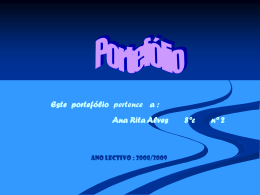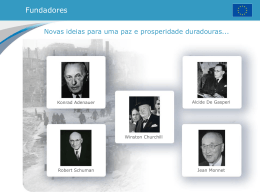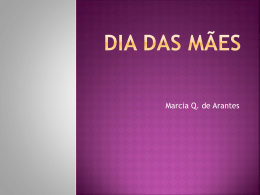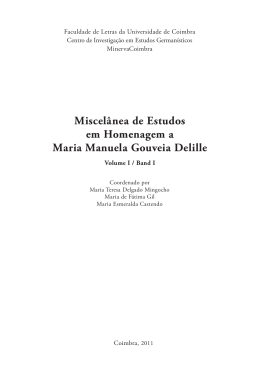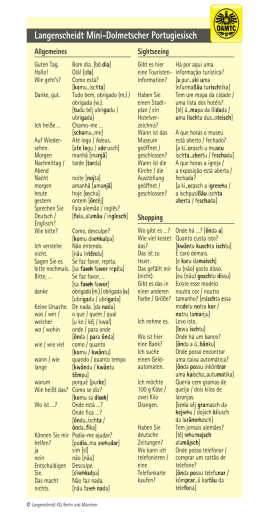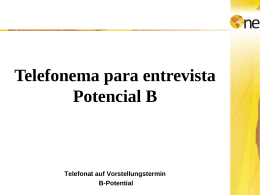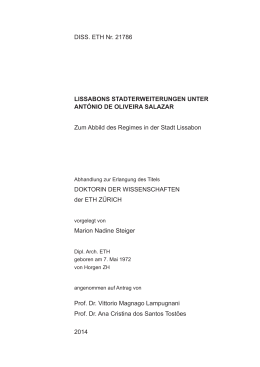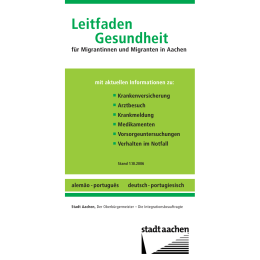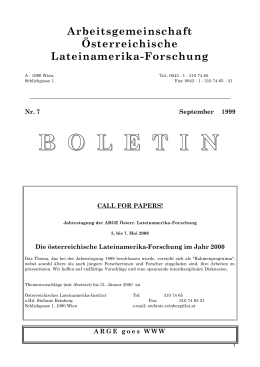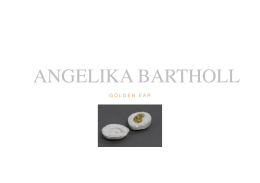Composers Notes Redaktion/Übersetzung deutsch/englisch: Jochen Arne Otto Übersetzung portugiesisch: Pedro Bittencourt Medusa de Lumbre (2006) Das Stück wurde in enger Zusammenarbeit mit Bittencourt am CICM Universität Paris 8/MSH Paris Nord und den Studios des ZKM | Karlsruhe geschrieben. Medusa de Lumbre ist das erste Stück, das Hernández Sánchez für den Einsatz von Live-Elektronik geschrieben hat. Er wollte, dass die Instrumentalklänge sowohl das Material für die Gesamtheit der Klangbearbeitung seien, als auch die Quelle der Steuerungsdaten für seine eigenen Transformationen und die Verräumlichung. Diese Beziehung ist im Verlauf des Stücks hörbar, insbesondere zwischen Dynamik und Tonhöhe, sowie anhand der rhythmischen Variationen im Schlussteil. Der Titel assoziiert Kometen – ›Feuer-Medusen‹ – womit sich der Komponist den Klang des Instruments als den Kern eines Kometen vorstellt: er durchquert den Klangraum und wird im Prozess seiner Verwandlung wahrgenommen, ganz so wie wir Kometen von der Erde aus wahrnehmen. Auf diese Weise wird das gesamte klangliche Universum von den Klängen des Baritonsaxofons abgeleitet, während die daraus erzeugten Texturen einander nicht akkumulativ überlagern, sondern sich in einer kontinuierlichen und subtilen Verwandlung befinden. This piece was written in close collaboration with Bittencourt at the CICM University Paris 8/MSH Paris Nord and at the studios of ZKM | Karlsruhe. Medusa de Lumbre was the first piece that Hernández Sánchez wrote using live electronics. He decided that the instrumental sounds should be both the material for all processing as well as the source of control data for its own transformations and spatialization. This relation can be heard throughout the piece, particularly between the dynamics and the pitch transpositions, as well as in the variations of the rhythmic patterns towards the end. The title makes reference to a comet, a ›Fire Medusa‹, and the composer conceived of the instrumental sound as the main core of a comet, crossing sonic space and being perceived as it transforms, similar to the way in which we can perceive comets from earth. That way, the work's whole sonic universe is derived from the sounds of the baritone saxophone, yet the textures generated with these sounds are not accumulative, but rather in a constant and subtle mutation. Essa peça foi escrita em estreita colaboração com Pedro Bittencourt nos estúdios do ZKM | Karlsruhe e CICM Universidade Paris 8/MSH Paris Nord. Medusa de Lumbre foi a primeira peça de Hernández Sánchez com eletrônica em tempo real. O compositor decidiu que os sons instrumentais seriam ao mesmo tempo a fonte de todos os tratamentos e o controle de todos os parâmetros de suas próprias transformações e espacialização. Essa relação pode ser ouvida ao longo da peça, especialmente entre as transposições de nuances e alturas, além das variações nos padrões rítmicos no final da obra. O título faz referência a uma metáfora com um cometa, ›Fire Medusa‹, e o compositor concebeu o som instrumental como o núcleo principal do cometa, atravessando o espaço sônico e sendo percebido à medida em que ele se transforma, similar à forma pela qual percebemos os cometas da Terra. Assim, o universo sônico de Medusa de Lumbre é inteiramente derivado dos sons do sax barítono. As texturas geradas por esses sons não são acumulativas, e se apresentam numa constante e sutil mutação. Juan Camilo Hernández Sánchez WERGO / SCHOTT MUSIC & MEDIA GmbH WERGO · Weihergarten 5 · 55116 Mainz · Germany · www.wergo.de Tel. +49 (6131) 246-890 · Fax: +49 (6131) 246-216 · [email protected] Vertrieb: New Arts International · Tel. +49 (821) 660 144 64 Modes of Interference No 2 (2006) Modes of Interference Nr. 2 erkundet das Feedback zwischen einem fest im Inneren des Saxofons befestigten Mikrofons und zwei Lautsprechern als grundlegendem Aufbau zur Erzeugung eines dynamischen klanglichen Systems. Das Gesamtverhalten dieses Systems hängt nicht nur eng von der Steuerung durch den Saxofonisten ab, sondern auch von den klanglichen Charakteristiken des Konzertsaals (einschließlich des Publikums): Der Saxofonist erkundet eine Anzahl von Spieltechniken auf eine ungewöhnliche und einflussanfällige Weise, die Raumakustik ebenso wie Umgebungsgeräusche mit einbezieht. Ein Computerprogramm verarbeitet das Klangmaterial, das in der Rückkopplungsschleife kreist und transformiert das Signal in Echtzeit mit Methoden der Granularsynthese – der prozessierte Klang tritt erneut in die Rückkopplungsschleife ein und nimmt so Einfluss auf das übergeordnete Verhalten des Systems. Auf diese Weise erwächst das klangliche Potential aus den zahlreichen technischen und akustischen Bedingungen des Live-Spiels, das klingende Resultat spiegelt jedoch durchweg das komponierte Netzwerk klanglicher Wechselwirkungen und die Gesamtheit der Feinheiten in den Handlungen des Instrumentalisten wider. Auf diese Weise betrachtet, komponiert ein Komponist nicht die Musik selbst als fest umrissenen Gegenstand, der unabhängig gegebener und angenommener Voraussetzungen bestünde, sondern vielmehr ein Netzwerk von Echtzeit-Wechselwirkungen zwischen Systemkomponenten. Modes of Interference Nr. 2 explores the feedback generated by a microphone firmly set inside the saxophone, and two loudspeakers as the fundamental setup to establish a dynamic sonic system. This system's overall behaviour depends not only strongly on the saxophonist's control, but also on the acoustic qualities of the concert hall (including the audience): the saxophonist explores a variety of playing techniques in a delicate and unusual manner that takes into account the room acoustics and noises. A computer program processes the sonic material that circulates in the feedback loop, transforming the signal with granular sampling methods in real time – the processed sound re-enters the feedback loop and affects the larger system behaviour. This way, the sonic potential emerges from the numerous technical and acoustic conditions of the live performance, yet the sounding results consistently reflect the composed network of sonic interactions and all subtle nuances in the instrumentalist's actions. In this perspective, a composer composes not the music itself, as a definite object existing regardless of given and accepted conditions, but rather a network of real-time interactions among system components. Essa peça explora a microfonia gerada por um microfone firmemente fixado no interior do sax e duas caixas de som, como design fundamental para se estabeler um sistema sonoro dinâmico. O comportamento global do sistema depende profundamente do controle do saxofonista, e também da acústica da sala de concerto (incluindo o público). O saxofonista explora várias técnicas estendidas de forma inusitada e delicada, de acordo com a acústica e os ruídos do ambiente. Um programa de computador opera em tempo real algumas transformações de sinal dos materiais que circulam dentro do loop de retroalimentação (feed back), com métodos de sampleamento granular. O próprio som processado claramente entra no loop, afetando o comportamento mais amplo do sistema. Dentro dessa abordagem, o potencial musical surge de inúmeras circunstâncias acústicas e técnicas da performance ao vivo, ainda que o resultado sonoro reflita consistentemente a composição da rede de interações sonoras e todas as sutis nuances das ações do saxofonista. Sob essa perspectiva, o compositor não compõe a música como um objeto finito, que existe independentemente de condições dadas e aceitas, mas muito mais como uma rede de interações em tempo real dentro dos componentes do sistema. Agostino Di Scipio WERGO / SCHOTT MUSIC & MEDIA GmbH WERGO · Weihergarten 5 · 55116 Mainz · Germany · www.wergo.de Tel. +49 (6131) 246-890 · Fax: +49 (6131) 246-216 · [email protected] Vertrieb: New Arts International · Tel. +49 (821) 660 144 64 Stratifications (2010) Der Begriff ›Stratifikation‹ bezeichnet sowohl den Zustand der Überlagerung als auch den Prozess des Schichtens. Der zentrale Gedanke des Stückes ist, lineare, horizontale Bewegungen zu überlagern, um homogene oder heterogene, vertikale Schichtungen schon in der Instrumentalstimme entstehen zu lassen. Einzeltöne mit speziellen spektralen Qualitäten entwickeln sich zu komplexen Mehrklangketten und werden im Zusammenspiel mit der Elektronik dekonstruiert und nichtlinear rekombiniert, so dass eine sich in unterschiedliche Dimensionen entwickelnde Skulptur entsteht. The concept ›stratification‹ means both a state of layered consistency and the process of layering itself. The central idea of the piece is the superposition of linear, horizontal movements with the aim of generating homogeneous or heterogeneous layerings already at the level of the instrumental part. Single notes with particular spectral qualities develop into chains of sound complexes. In interaction with the electronics, they are deconstructed and combined in a non-linear manner, giving rise to a sculpture which develops in various dimensions. O conceito de ›estratificação‹ significa ao mesmo tempo um estado de consistência sobreposto e o próprio processo de se sobrepor. A ideia central da peça é a superposição de movimentos lineares e horizontais com o objetivo de gerar sobreposições heterogêneas (ou homogêneas) já desde o nível da parte instrumental. Notas com características espectrais singulares se desenvolvem em correntes de sons complexos. Na interação com a eletrônica, eles são desconstruídos e combinados de maneira não-linear, fazendo surgir uma escultura sonora que se desenvolve em várias dimensões. Bernd Schultheis WERGO / SCHOTT MUSIC & MEDIA GmbH WERGO · Weihergarten 5 · 55116 Mainz · Germany · www.wergo.de Tel. +49 (6131) 246-890 · Fax: +49 (6131) 246-216 · [email protected] Vertrieb: New Arts International · Tel. +49 (821) 660 144 64 The Well-Tempered Patch II (2012) The Well-Tempered Patch II für Saxofon und Ringmodulation ist die zweite Arbeit in einer Reihe von Stücken, in der sich Tom Mays Soloinstrumenten und elementarer Echtzeit-Klangverarbeitung nähert. Das vorliegende Stück ist die Fassung für Altsaxofon – durch eine einfache Änderung der Voreinstellung in der Computer-Software kann es jedoch mit jedem Saxofon von Sopran bis Bass gespielt werden. Dank der engen Zusammenarbeit mit Pedro Bittencourt steht das Instrument im Mittelpunkt der Klangverarbeitung und ist in der Lage, die Elektronik präzise zu steuern, so dass ein neues, hybrides oder erweitertes Instrument entsteht. Der Saxofonklang wird von vier Ringmodulatoren verarbeitet, die in Max/MSP implementiert wurden. Mittels Amplitudentracking werden dabei Ketten von Modulatoren gesteuert und inharmonische Glissandi in Abhängigkeit der Lautstärke erzeugt. Die Partitur verwendet Vierteltonintervalle um eine bessere Abstimmung mit den Ringmodulatoren zu ermöglichen. The Well-Tempered Patch II for saxophone and ring modulation is the second work in a series of pieces by Tom Mays exploring solo instruments and basic real-time sound processing. This version of the piece is for alto sax, although with a simple change of preset in the software patch it can be played by any saxophone from soprano to bass. Thanks to the close collaboration with Pedro Bittencourt, the instrument is placed at the centre of the sound processing, capable to exercise precise control over the electronics to create a new hybrid, extended, or augmented instrument. The sound of the saxophone is processed with four ring modulators implemented in Max/MSP, and amplitude following is used to activate the layers of modulators as well as to create inharmonic glissandi as a function of the sonic intensity. The instrumental score uses quarter-tone intervals to allow better tuning to the tonalities of the ring modulators. O Patch bem temperado II para saxofone e modulação em anel é o segundo trabalho de uma série de peças de Tom Mays explorando instrumentos solo com transformações eletrônicas básicas. A presente versão é para sax alto, mas com uma simples mudança de configuração (preset) no patch do computador, ela pode ser tocada em qualquer saxofone, do soprano ao baixo. Graças à colaboração com Pedro Bittencourt, o instrumento é posicionado no centro do processamento de som e capaz de exercer um controle preciso sobre a eletrônica. Assim é criado um instrumento novo, híbrido, estendido ou ›aumentado‹. O som do saxofone é processado por quatro moduladores de anel implementados em Max/MSP, e o acompanhamento de amplitude é utilizado para ativar as camadas de moduladores e também criar glissandos inarmônicos como função da intensidade do sax. A partitura instrumental utiliza intervalos de quartos de tom para permitir uma melhor ›afinação‹ com as tonalidades dos moduladores de anel. Tom Mays WERGO / SCHOTT MUSIC & MEDIA GmbH WERGO · Weihergarten 5 · 55116 Mainz · Germany · www.wergo.de Tel. +49 (6131) 246-890 · Fax: +49 (6131) 246-216 · [email protected] Vertrieb: New Arts International · Tel. +49 (821) 660 144 64 True Story (2009) This is the story of a voice the story of a voice emerging from silence a voice born from nothingness This is its story This is True Story Dedicated to Charles Mingus True Story entspringt dem Zwiegespräch zwischen dem Saxofonisten und einem musikalischen Organismus: ein wandlungsfähiges, elektronisches Gebilde, das im Verlauf des Konzerts geboren wird, sich entwickelt, und schließlich stirbt. Das für seine Entstehung verantwortliche elektronische System ist ein Netzwerk untereinander verbundener Delays. Als lebende Zelle des Organismus betrachtet, kann jedes einzelne der Delays seine Parameter ändern. Dies geschieht auf Grundlage der erfassten Umwelteinflüsse und der individuellen Einstellung. Die selbststeuernden Vorgänge innerhalb des Systems bilden so die alleinige Basis der Klangverarbeitung, und der entstehende Klang ist das Resultat eben dieser Prozesse. True Story wurde im internationalen Kompositionswettbewerb GERMI ausgezeichnet. True Story derives from the conversation between the saxophonist and a musical organism: an adaptable electronic construction that during the concert is born, develops, and then dies at the end. The electronic system responsible for the creation of this music organism is a network of interconnected delay lines. Each delay line, considered as a living cell of the organism, can individually change its parameters, influenced by its sensing of the environment and by its individual settings. There is no other sound processing than the result of the system's self-regulating processes. All system processes are supervised and controlled by the system's ability of sound control feedback. True Story was awarded in the GERMI international composition competition in Rome in 2009. True Story se origina de uma conversa entre o saxofonista e um organismo musical: uma construção eletrônica adaptável que nasce, é desenvolvida durante o concerto e que no final morre. O sistema eletrônico responsável pela criação desse organismo é uma rede de linhas de delay interconectadas. Cada linha de delay é considerada como uma célula viva do organismo, que pode individualmente mudar os seus parâmetros pela influência da sua percepção do ambiente e pela sua configuração individual. Não há nenhum outro processamento de som além do resultado do sistema e seus processos auto-regulatórios. Todos os processos do sistema são observados e guiados pela sua habilidade em controlar a retroalimentação sonora (feedback). True Story ganhou a competição internacional GERMI 2009 em Roma. Phivos-Angelos Kollias WERGO / SCHOTT MUSIC & MEDIA GmbH WERGO · Weihergarten 5 · 55116 Mainz · Germany · www.wergo.de Tel. +49 (6131) 246-890 · Fax: +49 (6131) 246-216 · [email protected] Vertrieb: New Arts International · Tel. +49 (821) 660 144 64 Três Peças do Livro da Escuridão (2007) Das Buch der Dunkelheit (Livro da Escuridão) ist Teil einer vierteiligen Sammlung, die auch das Vergessene Buch, das Buch des Leuchtens und das Buch der Visionen umfasst. Die vier Bücher sind eine Art Tagebuch, in denen Ferreira Lopez musikalische und klangliche Ideen festhält. In ihnen ist eine Vielfalt musikalischen Materials zu finden, das auf alltäglichen Gefühlen, kurzen visuellen Sequenzen, klanglichen Eindrücken, emotionalen Impulsen und unterbrochenen Erinnerungen beruht. Der Komponist versucht, vormals festgehaltenes Material allein auf Grundlage intuitiver, manueller Gesten auszuwählen und so das richtige Buch zu greifen, in dem Klänge, Gefühle oder Worte festgehalten werden sollen. Das Buch der Dunkelheit ruft insbesondere Situationen auf, die mit persönlichen Gefühlen in Zusammenhang stehen. Es ist im Grunde ein Verzeichnis von Erinnerungen, die in Verbindung mit Wehmut einen verwunderten Blick auf die Welt affirmieren. Die drei Stücke formen ein Ganzes, und handeln in ihrem musikalischen Kern von Gefühlen des Abschieds. Ausgangspunkt aller Stücke ist eine strenge, dreigeteilte Struktur grundlegender Elemente: klangliche Szenen, Instrumentalklänge und live-elektronische Klänge, die auf Grundlage in Echtzeit gespielter Instrumente gewonnen werden. Die globale Form ist dabei die eine Bogens, und vom Anfang bis zum Beginn des letzten Stücks ist eine Art Zerfall der verschiedenen musikalischen Elemente hörbar, ein Versuch, die Einzigartigkeit der Geburt eines Flusses darzustellen. The Darkness Book (Livro da Escuridão) is part of a four-book collection which includes the Forgotten Book, the Luminescence Book and the Visions Book. These four books are a kind of diary where Ferreira Lopes records musical or sonic ideas. Within we can find a large diversity of musical material based on everyday feelings, short visual sequences, sonorous impressions, emotional impulses, or disrupted memories. The composer tries to choose previously registered materials only based on intuitive hand gestures, trying to pick up the right book where sounds, feelings or words must be placed. The Darkness Book particularly evokes situations related with personal feelings. It is in effect a register of memories that together with a sadness embrace an incredulous image of the world. The three pieces form a whole, the nucleus of the musical discourse centred on feelings of departure. The starting point of all pieces is a very strict structure divided by three principal elements: sonorous scenes, instrumental sounds and live electronic sounds constructed from instrumental sounds played in real time. The global form is arched, and from the beginning of the last piece it is possible to hear a kind of a disaggregation of the different musical elements, as an attempt to describe the uniqueness of a river birth. O Livro da Escuridão faz parte de uma coleção de quatro livros: o Livro do Esquecimento, o Livro da Luminescência e o Livro das Visões. Esses quatro livros são uma espécie de diário onde Ferreira Lopes anota regularmente ideias sonoras e musicais. Podemos encontrar nos livros uma grande diversidade de materiais sonoros, como um reservatório de imagens sonoras e idéias musicais, baseados em sentimentos do quotidiano, seqüências visuais, impressões sonoras, impulsos, emoções e memórias interrompidas. O compositor busca escolher materiais previamente registrados exclusivamente baseados em gestos livres, onde a mão tenta escolher o lugar certo e o livro certo onde o som, os sentimentos ou as palavras devem ser posicionados. O Livro da Escuridão evoca situações particularmente relacionadas a sentimentos pessoais. O Livro da Escuridão é efetivamente um registro de memórias, onde a tristeza e as lembranças abrangem uma imagem incrédula do mundo. As três peças formam uma unidade, onde o núcleo do discurso musical tem como base sentimentos de despedida. O ponto de partida das três peças é baseada numa estrutura muito estrita dividida em três elementos principais: cenas sonoras, sons instrumentais e sons eletrônicos em tempo real, construídos a partir de sons instrumentais tocados ao vivo. A forma global é constituída em arco, e a partir do início da última peça é possível escutar a desagregação dos diferentes materiais musicais, como uma tentativa de descrever a singularidade do nascimento de um rio. Paulo Ferreira Lopes WERGO / SCHOTT MUSIC & MEDIA GmbH WERGO · Weihergarten 5 · 55116 Mainz · Germany · www.wergo.de Tel. +49 (6131) 246-890 · Fax: +49 (6131) 246-216 · [email protected] Vertrieb: New Arts International · Tel. +49 (821) 660 144 64 Plexus (2009) In Plexus wollte Fuentes eine enge Beziehung zwischen dem Instrument und der Elektronik herstellen. Mit dem elektronischen Teil suchte er nach einer dunklen, groben Farbigkeit, die das gesamte Stück hindurch statisch bleibt, einer nahezu monolithischen Form. Im Gegensatz dazu ist das Saxophon voll von Bewegung und Farbe. Während der Kompositionsarbeit fühlte sich Fuentes von einem lyrischen Gedanken angesprochen: die Elektronik als Schatten des Saxophons, dessen Umrisse zeichnend. Um einen verstörenden, beharrlichen Eindruck entstehen zu lassen, ist die Elektronik über längere Abschnitte auf die tiefe Lage beschränkt (als ob sich niemals etwas ändern würde), zieht das Saxophon nach unten. Um diese Dunkelheit des Werks zu kontrastieren, war Fuentes an anderen Stellen daran interessiert, den Obertonbereich des Saxofons zu betonen, es so empor zu richten, »ins Licht«. Auf diese Weise wollte der Komponist eine Farbigkeit der Klänge erkunden, auf Grundlage widersprüchlicher ästhetischer Konzepte und mit einer Vielzahl von Absichten, Vorgängen und Handlungen auf Ebene der Komposition und der musikalischen Interpretation. Die Arbeit ist zwischen Schwere und Leichtigkeit angesiedelt, ein Kontrast, der für Fuentes' Musik eine große Rolle spielt. Für die Interpretation durch Pedro Bittencourt erfuhr die Partitur eine Überarbeitung. In den letzten Jahren hat sich zwischen ihnen eine enge Zusammenarbeit und tiefe Freundschaft entwickelt. Fuentes widmet ihm diese neue Version mit großer Zuneigung. In Plexus, Fuentes was interested in establishing a close relationship between the instrument and the electronics. With the electronics he was looking for a dark and rough colour, static throughout the piece, almost a monolithic form. In contrast to this, the saxophone has a lot of movement and colour. During the composition of the work, a poetic idea had been appealing to him: the electronics as a shadow of the saxophone, tracing out its profile. To achieve a disturbing and persistent character, the electronics is restricted to the lower register for longer passages (as if things were not changing), pulling the saxophone down. In opposition to the darkness of the work, at other points Fuentes was interested in reinforcing the harmonic range of the saxophone, pointing it upwards, so to speak, »into the light«. In this vein, the composer wanted to explore a tone colour based upon inconsistent aesthetic concepts and containing a load of intentions, operations and actions at the level of the acts of composition, and, of course, of musical interpretation. The work is situated between heaviness and lightness, both of which Fuentes always intends to contrast in his music. The score was revised for the interpretation by Pedro Bittencourt. In recent years, a deep personal collaboration and friendship has developed between the two. Fuentes dedicates this new version to him with great affection. Em Plexus, Fuentes estava interessado em estabelecer uma relação próxima entre o instrumento e a eletrônica. Ele estava buscando cores escuras e rústicas com a eletrônica, sem grandes mudanças durante a peça, quase como uma forma monolítica. Oposto a isso, o saxofone tem muito movimento e cor. Durante a composição da peça, uma ideia poética sempre esteve chamando pelo compositor: que a eletrônica se comportasse como uma sombra do saxofone, delineando o seu perfil. Para atingir um caráter persistente e perturbador, a eletrônica permanece por longos momentos em trechos graves (como se nada estivesse mudando), puxando o sax para baixo. Em oposição à »escuridão da obra«, Fuentes estava interessado em outros pontos ao explorar todos os harmônicos do saxofone, apontando para cima, como quem diz: »Para dentro da luz«. Como vocês podem ver, em Plexus o compositor quis explorar uma ›cor sonora‹ baseando-se em conceitos estéticos inconsistentes, mas contendo uma carga de intenções, operações e ações no nível do ato da composição, e claro, da interpretação musical. A obra se afirma entre o pesado e o leve, ambos elementos que Fuentes sempre opõe na sua música. Ele revisou a partitura para a interpretação de Pedro Bittencourt. Recentemente eles desenvolveram uma grande colaboração e amizade. Fuentes dedica a ele com afeto essa versão. Arturo Fuentes WER-vb/Juli2015 WERGO / SCHOTT MUSIC & MEDIA GmbH WERGO · Weihergarten 5 · 55116 Mainz · Germany · www.wergo.de Tel. +49 (6131) 246-890 · Fax: +49 (6131) 246-216 · [email protected] Vertrieb: New Arts International · Tel. +49 (821) 660 144 64
Download
